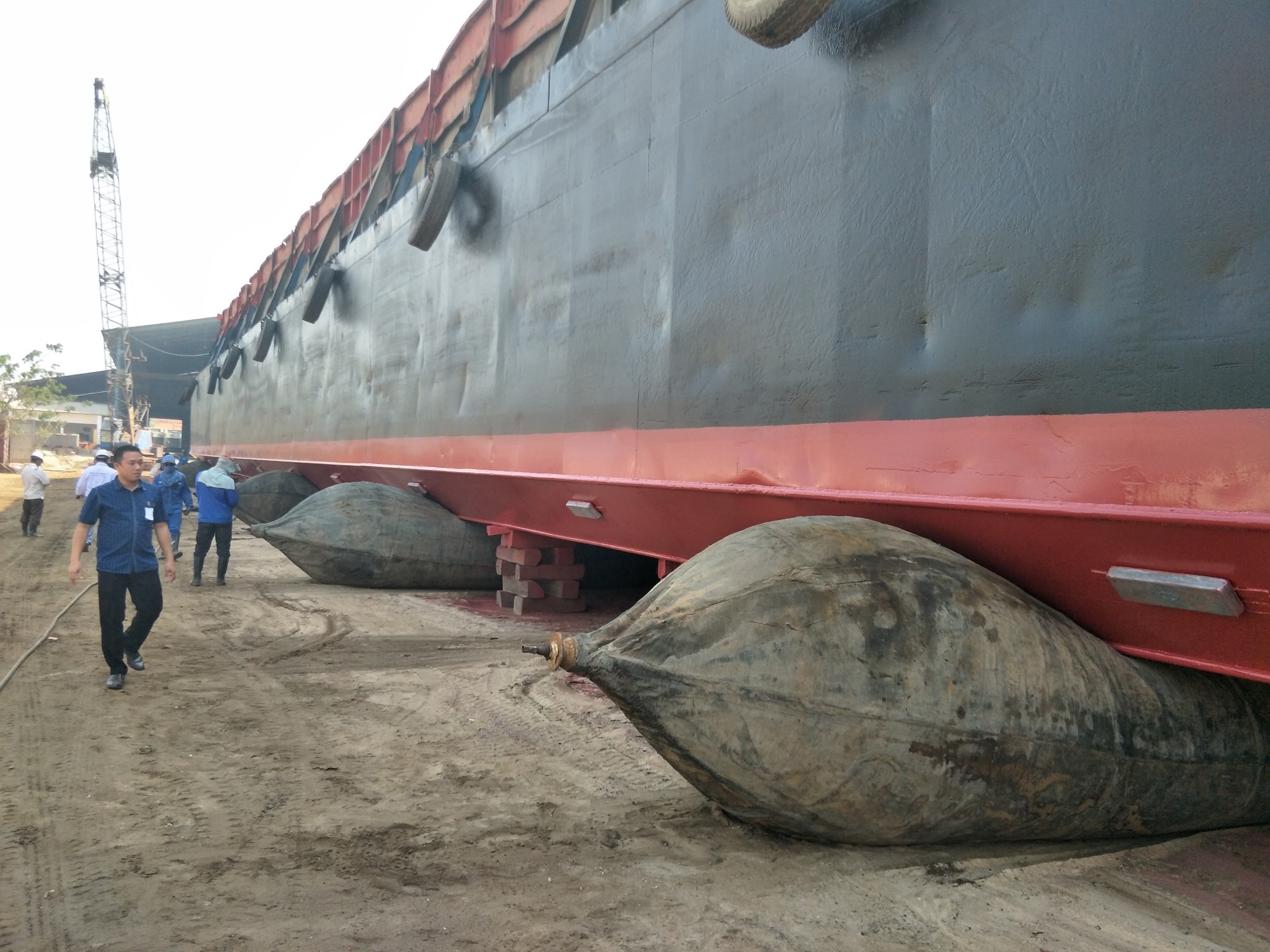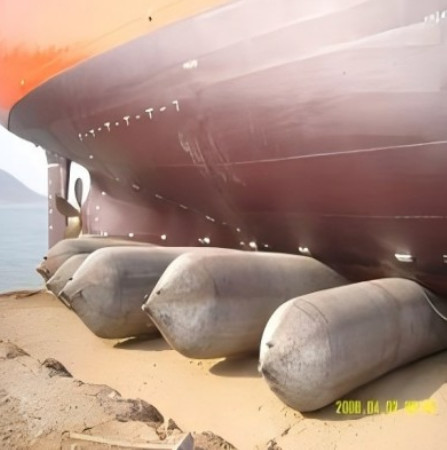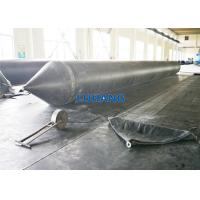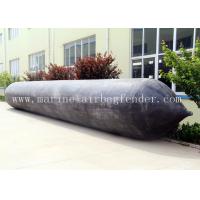| Sign In | Join Free | My himfr.com |
|
| Sign In | Join Free | My himfr.com |
|
| Ask Lasest Price | |
| Brand Name : | Lu Hang |
| Model Number : | LHA2 |
| Certification : | CCS/BV/ABS/SGS |
| Price : | To be negotiated |
| Payment Terms : | T/T, L/C |
| Supply Ability : | 30 Units Per Month |
| Delivery Time : | 10-15 work days |
What are Marine Launching Pneumatic Airbags?

Marine Launching Pneumatic Airbags are specialized devices used in the marine industry, particularly during the launching and hauling of ships and other large marine structures. These airbags are made of high-strength, flexible materials that can be inflated with air. When properly positioned under a vessel, they provide a cushioning and buoyant support system. During the launching process, the airbags help to smoothly transfer the weight of the ship from the building berth to the water. They reduce friction and stress on the hull, minimizing the risk of damage during this critical operation. In the case of hauling, marine launching pneumatic airbags can be used to lift a ship out of the water onto a slipway or dry dock. By carefully adjusting the inflation and deflation of the airbags, the vessel can be maneuvered safely and precisely. These airbags come in various sizes and load-bearing capacities to accommodate different types and sizes of marine vessels. They are an essential tool in shipyards and marine repair facilities, enabling efficient and safe handling of ships during key stages of their lifecycle. Overall, marine launching pneumatic airbags play a crucial role in the marine industry, facilitating operations that are vital for the construction, maintenance, and movement of ships and other marine structures.
Key Features

High Load-Bearing Capacity
One of the most remarkable features of marine launching pneumatic airbags is their ability to support extremely heavy loads. Depending on the size and construction of the airbag, they can bear loads ranging from a few tons to hundreds of tons. This makes them suitable for launching and hauling small boats, yachts, as well as large commercial vessels and even some naval ships.
Flexibility and Adaptability
These airbags are highly flexible, allowing them to conform to the shape of the vessel's hull. This flexibility ensures a secure and stable support system during launching and hauling operations. They can be easily positioned and adjusted according to the specific needs of each project, whether it's a vessel with a flat bottom or a more complex hull shape.
Cushioning Effect
The air inside the bags acts as a natural shock absorber, providing a cushioning effect that protects the vessel's hull from damage during the launching and hauling processes. This is particularly important as it reduces the risk of scratches, dents, and other structural damages that could occur when using more rigid support systems.
Easy Installation and Operation
Marine launching pneumatic airbags are relatively easy to install and operate. They can be quickly inflated using air compressors, and deflated just as easily after the operation is complete. This simplicity of use reduces the time and labor required for launching and hauling operations, increasing overall efficiency.
Working Principle
During the launching process, the airbags are placed beneath the
vessel at strategic locations. As the airbags are inflated, they
gradually lift the vessel off the ground or launching ramp. The air
pressure inside the bags creates a buoyant force that supports the
weight of the vessel. As the vessel is moved forward, the airbags
roll along the surface, providing a smooth and continuous support.
For hauling operations, the process is reversed. The airbags are
positioned under the vessel in the water, inflated to lift the
vessel, and then slowly moved onto the slipway or dry dock. The
controlled inflation and deflation of the airbags allow for precise
maneuvering of the vessel.
Marine Launching Pneumatic Airbags Material

Outer Coating Materials
Natural Rubber: Natural rubber is often used as an outer coating
material for marine launching pneumatic airbags. It has excellent
elasticity, which allows the airbag to stretch and deform under
load without losing its structural integrity. This property is
essential as the airbag needs to conform to the shape of the
vessel's hull during launching and hauling operations.
Additionally, natural rubber has good abrasion resistance,
protecting the airbag from damage when it comes into contact with
rough surfaces such as the launching ramp or the hull of the ship.
Synthetic Rubber: Synthetic rubbers like neoprene and nitrile
rubber are also popular choices. Neoprene has outstanding
resistance to ozone, sunlight, and chemicals, making it suitable
for marine environments where the airbags are exposed to harsh
weather conditions and seawater. Nitrile rubber, on the other hand,
offers excellent oil and fuel resistance. This is important as the
airbags may come into contact with oil or fuel residues in the
marine environment, and the resistance helps to prevent degradation
of the material.
Polyurethane Coating
Polyurethane coatings are applied to some marine airbags to enhance
their performance. Polyurethane has high strength and toughness,
providing an additional layer of protection to the airbag. It also
has good adhesion properties, ensuring that the coating adheres
well to the underlying fabric. This coating can improve the
airbag's resistance to wear, tear, and environmental factors,
extending its lifespan.
Reinforcing Fabrics
Nylon is a widely used reinforcing fabric in marine launching
pneumatic airbags. It has a high tensile strength, which means it
can withstand large pulling forces without breaking. Nylon fabrics
are lightweight yet strong, allowing the airbags to be both durable
and easy to handle. The fabric's strength is crucial in maintaining
the shape and integrity of the airbag when it is inflated and under
load. Nylon also has good resistance to abrasion and chemicals,
further contributing to the airbag's durability in the marine
environment.
Marine Launching Pneumatic Airbags Specification
Marine launching pneumatic airbags are essential tools in the shipbuilding and ship - repair industries, designed to facilitate the safe and efficient launching and hauling of vessels. These airbags come with a set of specifications that ensure their proper performance under various conditions.
| Size | Diameter | 1.0m, 1.2m, 1.5m, 1.8m, 2.0m, 2.2m, 2.5m, 2.8m, 3.0m |
| Effective Length | 6m, 10m, 12m, 15m, 18m, 20m, 22m, 24m, etc | |
| Layers | 4 layers, 5 layers, 6 layers, 8 layers, 10 layers, 12 layers |
| Model | Dia | Effective Length | Overall Length | Cord Layer | Rubber Plate | Thickness | Working Pressure | Bursting Pressure | Lifting Height | Bearing Capacity | |
| M | M | M | Layer | Layer | mm | MPa | MPa | M | Ton/meter | Ton/airbag | |
| LH-6 | 1.2 | 12 | 14 | 6 | 1 | 7.2 | 0.17 | 0.75 | 0.90 | 7.85 | 94.20 |
| 1.00 | 5.23 | 62.76 | |||||||||
| 1.10 | 2.62 | 31.44 | |||||||||
| LH-7 | 1.5 | 15 | 17 | 7 | 1 | 8.2 | 0.16 | 0.70 | 1.00 | 12.21 | 183.15 |
| 1.10 | 9.77 | 146.55 | |||||||||
| 1.20 | 7.33 | 109.95 | |||||||||
| 1.30 | 4.89 | 73.35 | |||||||||
| LH-8 | 1.8 | 18 | 20.5 | 8 | 1 | 9.2 | 0.15 | 0.67 | 1.20 | 13.96 | 251.28 |
| 1.30 | 11.63 | 15.12 | |||||||||
| 1.40 | 9.31 | 167.58 | |||||||||
| 1.50 | 6.98 | 125.64 | |||||||||
| 1.60 | 4.65 | 83.70 | |||||||||
| LH-10 | 2.0 | 20 | 23 | 10 | 1 | 11.2 | 0.17 | 0.75 | 1.30 | 18.32 | 366.40 |
| 1.40 | 15.70 | 21.98 | |||||||||
| 1.50 | 13.09 | 261.80 | |||||||||
| 1.60 | 10.47 | 209.40 | |||||||||
| 1.70 | 7.85 | 157.00 | |||||||||
Size can be customized
FAQ
How do marine launching pneumatic airbags work?
During the launching process, the airbags are placed beneath the
vessel at strategic locations. As they are inflated with air, they
gradually lift the vessel off the ground or launching ramp. The air
pressure inside the bags creates a buoyant force that supports the
weight of the vessel. As the vessel is moved forward, the airbags
roll along the surface, providing a smooth and continuous support.
For hauling operations, the process is reversed. The airbags are
positioned under the vessel in the water, inflated to lift the
vessel, and then slowly moved onto the slipway or dry dock.
What are the advantages of using marine launching pneumatic
airbags?
Cost - effective: Compared to traditional launching and hauling
methods such as using large cranes or building elaborate launching
structures, pneumatic airbags are relatively inexpensive. They
require less infrastructure and can be reused for multiple
projects.
Flexibility: They can be used for a wide range of vessel sizes and
shapes. Their flexibility allows them to conform to the hull of the
vessel, providing a secure support system.
Safe: The air inside the bags acts as a cushion, reducing the risk
of damage to the vessel's hull during the launching and hauling
processes. They also offer a more stable support compared to some
other methods, minimizing the chances of the vessel tipping or
experiencing sudden impacts.
What materials are marine launching pneumatic airbags made of?
The outer layer is usually made of high - strength synthetic
fabrics such as nylon or polyester, which are coated with a durable
rubber layer. The nylon or polyester fabric provides the necessary
tensile strength to withstand the pressure and load, while the
rubber coating offers protection against abrasion, water, and
chemicals in the marine environment.

|




